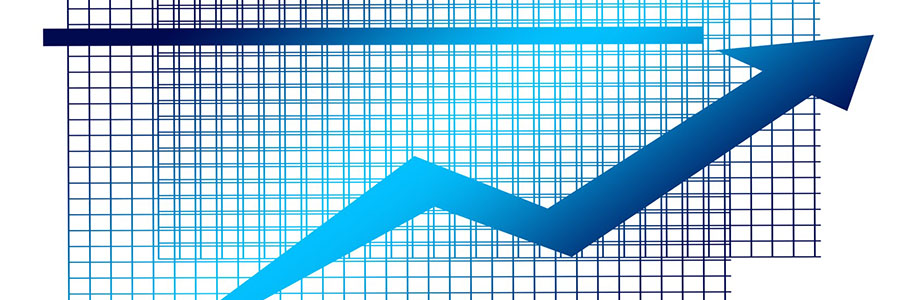The Business Cycle: Introduction to Macroeconomic Indicators
Objective
Students will be able to:
- Define and label the phases of the business cycle.
- Understand and define the general meaning of the terms associated with business cycle.
- Understand that the business cycle is comprised of expansions and contractions of the GDP within the economy.
Standards

In this economics lesson, students will analyze graphs to learn the parts of the business cycle.
Procedure
Warm-Up
Tell students this lesson will help them understand a basic macroeconomic tool called the business cycle. Have students look at either FRED from the St. Louis Fed or project the graph in the link on the board for them to see. Ask students: “How do you think the economy is doing right now?”and give them sufficient time to respond. If they do not respond or need more prompting, ask: “Is the economy growing (going up) or shrinking (going down)?” Follow up by asking: “What factors do you think is causing economic activity to be up (or down)?”
Modeling
Open the PowerPoint titled The Business Cycle. Slide 2: Explain that these will be the key words used to discuss the business cycle. Tell students that a business cycle is just a period of expansion and contraction of the economy, measured by changes in the real GDP, or Gross Domestic Product. Slide 3: Walk students through the phases of the business cycle, discussing each phase and giving students enough time to copy the slide into the notes. Explain the following: In the expansion part of the cycle, GDP is growing, unemployment is going down, but inflation may be rising. In the contraction part of the cycle, GDP is shrinking, unemployment is growing, and inflation may stall or shrink. Slides 4 and 5 are the vocabulary terms with definitions. Talk about these definitions and give students enough time to copy them. You may also want to go back to slide 3 to discuss them. Slide 6: Have one or more students come to the board to draw and label the business cycle.
Group Activity
Put students in pairs to complete the Business Cycle Activity. Distribute one copy of the cards and answer sheet to each pair of students. Tell students that you will be reading each statement, then giving them one minute to discuss the potential answer with their partner. Once selecting an answer, they should place an X showing their answer and hold up the card corresponding with their answer. Start the activity, stopping to review and discuss student answers after each statement. After completing the activity, ask students if they have any questions about the business cycle.
Individual Activity
Distribute a copy of Drawing a Business Cycle activity to each students. Tell students they should review the information and complete the assignment. Debrief the assignment by reviewing student answers. (Answers will vary, but be sure each graph has the four phases of the business cycle. Unemployment should increase during a recession and decrease during a recovery.)
Assessment
Have students complete the Kahoot! Business Cycle Ticket and see the answers here.
Extension
Activity 1
Have students complete the worksheet “The Great Recession“. The article can be accessed electronically or printed out for students. Tell students to read the article and answer the questions from the reading. Review their answers and answer any questions they may have.
Activity 2
Put students into small groups. Randomly assigned each group a 10-year period (1980-1990, 1970-1980, etc.). Have each group visit The Balance web site to plot the GDP for each year in their ten year cycle. Be sure they label the phases of their business cycle and identify the lowest/highest periods of unemployment. You may choose to have them complete this assignment on the computer or with graph paper. Have the groups present their graphs to the class in sequence, explaining the parts of the business cycle for that 10-year period. You may also want them to post their graphs on the board for a historical perspective of the U.S. economy.
Resources